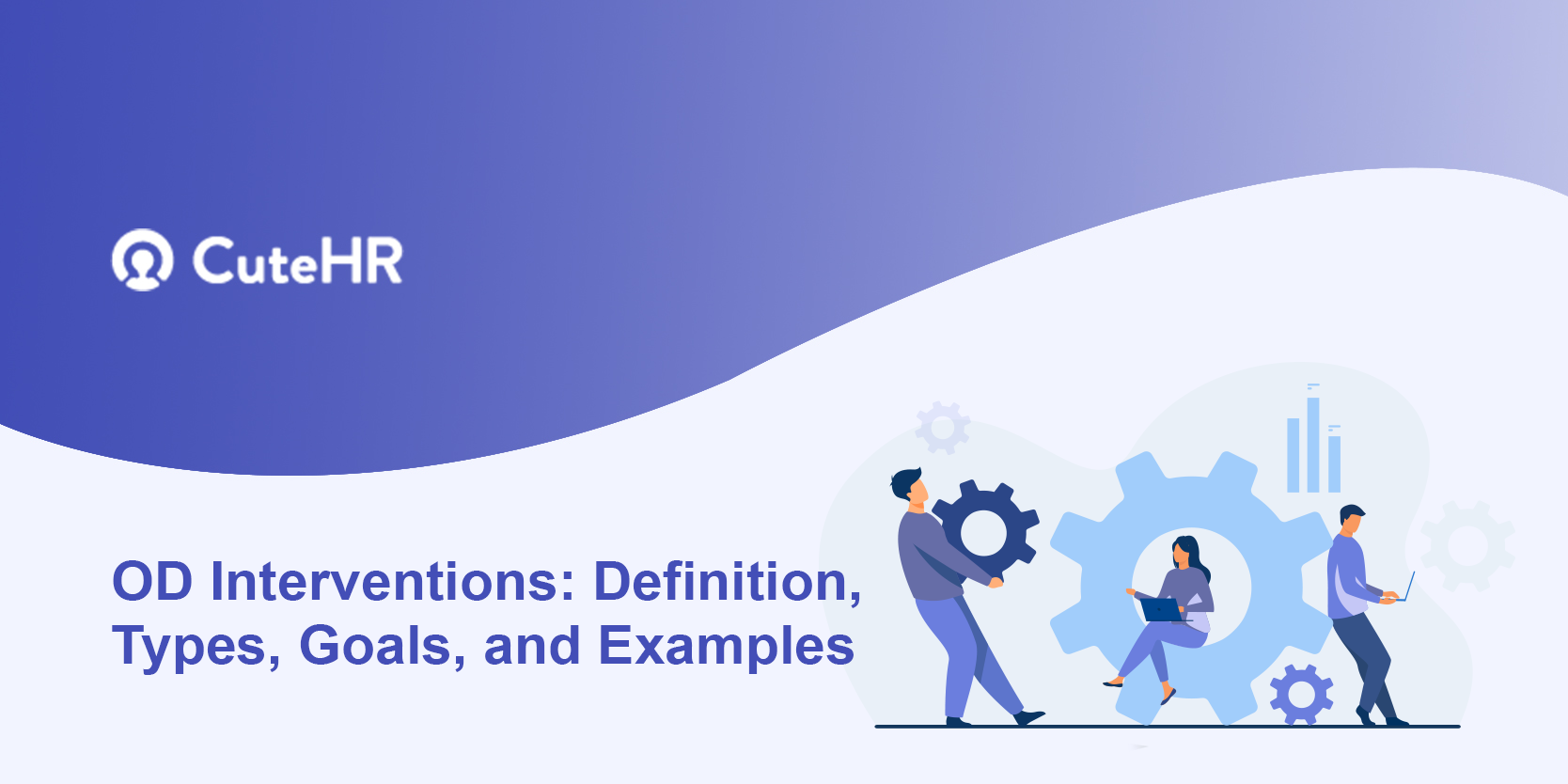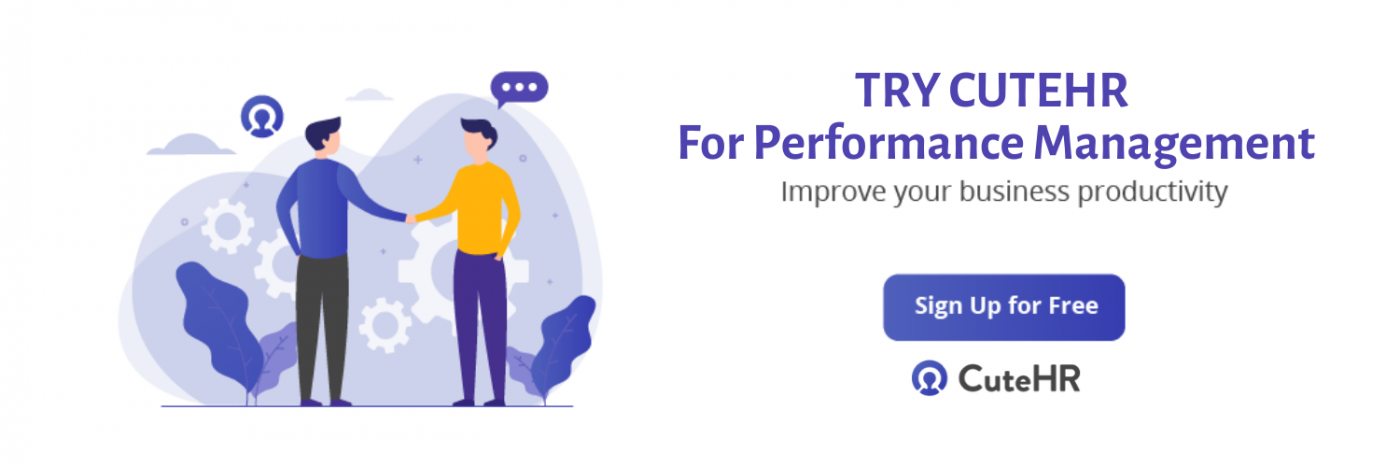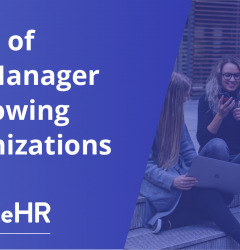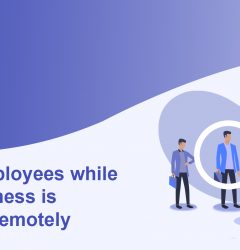11 May

Did you know? The company’s most important policy, according to 68%, is training and development.
Organizational development is a well-known word and a critical organizational function. In this blog, we will explore a concept many people have heard of but are unfamiliar with.
Our goal is to present a basic understanding of organizational development, what it entails, and some examples of common OD interventions and how it operates.
You will have a strong idea of what OD interventions are and the techniques that may be utilized to increase organizational performance by the end of this blog.
Table of Contents
What are OD Interventions?
In order to become adaptable, organizations should create, enhance, and consolidate strategies, structures, and procedures. This is accomplished through organizational development, a scientific method based on empirical research.
The varied outcomes of OD interventions can include financial performance, employee engagement, customer satisfaction, and general change management because OD interventions aim to increase organizational effectiveness.
However, it is important to emphasize that although OD and HRM (human resource management) are both people-centric strategies and are sometimes used similarly, they are different.
Meaning of OD Interventions
“OD interventions are actions and events that help a company perform better and work more efficiently.”
–Rober Zawacki
“An OD intervention refers to a variety of planned activities that clients and consultants undertake throughout the program.”
– French & Bell
Goals of OD Interventions
Each organization has different objectives. Increasing revenues, profit margins, market share, moral and/or cultural values, and the organization’s overall adaptability (or agility) are just a few examples of goals.
Increasing the organization’s competitiveness would be the main objective if there were one.
The concept of competitiveness holds that each company has special assets and techniques that allow it to succeed in the market. Innovative technologies (SpaceX), first-class customer service (Four Seasons Hotels), corporate executives like Elon Musk, or a business culture (Zappos). It might also depend on how responsive the company is to changing consumer needs.
For example, being the first to take advantage of an opportunity could guarantee your revenue for the following five years. These qualities can enhance the company’s success in the marketplace; thus, OD interventions intend to develop them.
This shows that the process of incidental change is different from organizational development. OD interventions focus on enhancing an organization’s capacity to evaluate how it is currently operating and make adjustments to meet its objectives. As a result, it is a continuous process as compared to change processes, which are often temporary.
OD intervention is therefore of even greater importance. Change is becoming a constant in this VUCA environment. OD intervention is a strategic component for guaranteeing this ongoing transition.
Types of OD Interventions
The OD interventions are also lengthy and complex. Cummings and Worley (2009) contend that it is impossible to know the precise number of different types of interventions. But broadly speaking, there are four types of OD interventions:
1. Human Resource Management Interventions
Even though an HR department and organizational development are not the same things, they do coordinate. Within a business, difficulties with “talent development,” performance management, child care, and even diversity may be identified that demand the HR department to create an intervention strategy.
Today, diversity is a prominent cultural and business issue. Gender, sexual preference, age, race, disability, and even culture are factors that enter the business world and affect an organization’s capabilities to implement its objectives.
Employee wellness is another area of intervention. For employees and other organization members, this involves boosting active lifestyles and stress management, among other health-related issues.
There are three ways to look at all of these interventions. They can bring about transformational change, which implies the organization is “rewired” completely. They can also take the form of ongoing change, whereby policies and culture are used to progressively reform and adapt the company.
Trans organizational change is the final lens through which adjustments take place through networking, mergers, and acquisitions.
2. Strategic change interventions
Through mergers, restructurings, and transformational changes, strategic change interventions combine two or more organizations.
3. Human process interventions
These interventions focus on the dynamics of group performance and interpersonal relationships.
They can be implemented to modify how an individual, such as a manager, communicates with staff members or even how staff members communicate with one another. They can be used to eliminate unproductive habits, develop productive actions, and boost general self-esteem.
Group interventions analyze how groups are created and how they function to achieve their desired goals. The use of team-building strategies to change group dynamics or a diagnosis and management of intergroup communication are examples of OD interventions.
Large groups, such as one consisting of management, employees, and stakeholders, could also be the focus of these interventions.
In some cases, it may be necessary to consult a third party. This may be due to the development of an “observer bias.” That simply refers to the willingness of the majority of individuals to perceive what they expect to experience. Consultants offer both a new perspective and a new methodology to the situation.
Conflict resolution is another argument for hiring a consultant. Conflict frequently promotes conversation and results in solutions. Thus, it is often a good thing.
However, it can also lead to shutdowns where no progress is achieved. The topic can be justified by consultants who have no personal interest in the discussion.
4. Techno-structural interventions
These interventions were developed in response to the organization systems’ successful implementation of innovations. To do that, it is necessary to assess which technologies should be used as well as to ensure that staff members are qualified to use them.
The interventions also deal with issues with organizational structure. Particularly if the organizational structure and function are effective because it allows the organization to adapt to change. For example, the central authority model is one that certain design organizations use.
This assumes that all administrative decisions are made autonomously by a single individual or small group. Employees are subject to strict control and have little to no input. Decentralized management is a different mindset that gives everyone, including employees, a say in decision-making.
Employees engage with clients and consumers and are interested in the success of the business. Incentives for innovation and improvement are also included in this strategy.
This intervention analyzes quality management and explores whether organizations change quickly to meet demands or if changes are continuous as part of the corporate culture. To improve the quality of life for employees, it also aims to boost productivity while making the job more exciting and challenging.
Several OD interventions target specific organizational resources at various levels. This will depend largely on the issues being addressed, the number of employees forced to engage in the change, and the chosen solution.
However, for an OD intervention strategy to be successful, cooperative management and employees at different levels of the hierarchy should work together.
The number of people involved
The number of participants in the OD intervention is a key factor to consider. Change takes longer to implement the more people are involved. For example, a human process intervention with a small team will proceed more swiftly in a tech firm than techno-structural interventions.
Among the issues being addressed
OD interventions help companies in resolving problems that have a root cause. A significant number of employees resigning from an organization is one example. High employee turnover rates are currently a problem, although OD interventions aim to address the underlying issues of high turnover.
You can expect that the issue of employee resignation will have a complete, all-encompassing impact on a tiny firm. A multinational company, on the other hand, will only be affected in places with a high turnover rate.
Solution
Solutions are made after identifying the fundamental cause of a problem. But they might not happen right away. An alternative definition of a solution includes transformational initiatives aimed at forging the organization’s ideal future.
Until the change has taken place, senior management and decision-makers are typically more affected than the workforce in the latter scenario.
Difficulties of OD Interventions
1. Change is necessary
The fact that managers and corporate officers don’t make a case for why the change is important is likely the biggest obstacle that people who wish to influence business change should face. They simply make a unilateral announcement that change will occur.
Furthermore, they make that announcement utilizing language that is loaded with data and facts that some people may not even understand. But everyone needs to agree on the idea for change to stay. This implies that there must be “something to sweeten the pot” for each member.
Fear is a common yet ineffective motivator. People are most motivated to seek change when they can see how it will improve their lives, such as through building their careers and promoting a better work environment.
2. Poor Planning
Lack of preparation can occasionally lead to failure. The individuals implementing the change are so intent on making it happen that they do not invest the necessary time in identifying difficulties, developing solutions, setting targets, and creating timelines.
The project fails because no foundation has been created upon which the OD interventions may be supported.
3. Investing in systems rather than people
Although adding new technology or systems may play a major role in an intervention, managers occasionally overlook the fact that there are also people issues.
For employees to effectively use the technology, they should receive training and support.
4. Limited Resources
Lack of funding for implementing change is another problem facing organizations. The management believes that the change will be affordable and immediate (which it won’t be).
Change is a long-term process that necessitates numerous interventions that have been attempted, tested, modified, and reapplied. Many organizations simply lack the resources to do that since it costs money and takes time.
5. Poor Management
Strong leadership abilities are necessary for all aspects of affecting change, including problem recognition, issue identification, intervention design and implementation, and success evaluation.
The talents that are frequently referred to as “soft skills,” such as the capacity to interact with both individuals and groups of people, inspire and encourage others, and communicate effectively, are necessary for a leader. Visionaries who can turn ideas into reality make strong leaders.
Examples of OD Interventions
When carried out correctly, OD interventions help organizations accomplish their goals, facilitating management, and enhancing overall operations.
As previously mentioned, there are four major categories of OD interventions: human process interventions, techno-structural interventions, human resource management interventions, and strategic change interventions.
Now let’s look at some examples of OD interventions from each of the categories.
1. Technostructural Interventions
There can be no doubt that technology plays a significant role in business. To increase their competitive advantage and stimulate growth, businesses all over the world rely on technological innovations.
Technostructural interventions focus on strengthening organizational performance and employee productivity by focusing on technology and the organizational structure.
Quality Management at its Best
Continuous process improvement, lean, and six sigma are other names for total quality management. It is a strategy that prioritizes customer satisfaction to enhance quality and performance. To do this, there is a heavy emphasis on full employee engagement in an ongoing product, process, and workplace culture improvement.
One of the best-known companies that utilize TQM is Ford Motor Company. They envisioned greater product development, a more stable environment, efficient management, and increased revenue.
The DMAIC (Define, Measure, Analyze, Improve, and Control) process was implemented by Art Hyde, Ford’s then-chief engineer, to find specific problems before it was presented to the consumers.
Work Planning
The outcomes of an organization are influenced by its work design, with well-designed work promoting increased productivity and financial development. Moreover, it can impact how an employee feels about their job, including whether they are inspired, involved, bored, or stressed out at work.
Sometimes a redesign is necessary for a company to accomplish its goals. The technological and structural interventions are used in this scenario. Redesigning a task, however, doesn’t always include modifying how things are done throughout the entire organization.
Instead, simple adjustments to how work is done or how employees interact with one another can have a big impact on the organization’s bottom line and the employees who work there.
2. Human Process Interventions
The earliest and best-known OD intervention types concerning the interpersonal, group, and organizational dynamics are human process interventions.
While focusing on enhancing employee performance, organizational development strategy should not be confused with human resource development.
While human process interventions concentrate on improving organizational effectiveness, HR development is much more concerned with the personal development of the employee.
Individual Interventions
These interventions are targeted at the specific employee and frequently concentrate on enhancing interpersonal communication. The goal of this intervention is to help the person understand their feelings, motivations, and behaviors as well as those of others.
The employee may receive help in determining their professional requirements, establishing complimentary career objectives, and resolving conflicts.
Forming A Team
One of the most well-known organizational growth strategies is team building. It refers to initiatives that help teams in enhancing their performance, communication, and employee engagement.
Interventions in Intergroup Relations
Inter-group interventions are used in OD interventions to promote efficiency and cooperation among a few teams within an organization in achieving a common objective.
These interventions typically occur in larger organizations when competing departments are competing just for a few resources or when departments are not aware of one another’s requirements.
3. Strategic change interventions
Strategic change interventions are measures a company decides to shift to a new organizational structure and mode of operation to establish a competitive edge. Organizational development plays an important role in implementing these changes.
Constant evolution
This intervention encourages businesses to make minor, ongoing improvements. The most popular example of ongoing transformation is a learning organization.
Businesses that shift away from a top-down hierarchical structure to a learning model are more likely to cooperate, take risks, and grow as well as become more competitive in the constantly developing workplace.
Moreover, rather than punishing errors and mistakes, this methodology focuses on experimentation and learning from them.
A Transorganizational transformation
Interventions involving two or more organizations are referred to as transorganizational transformation. This can take the shape of business collaboration to accomplish goals as well as mergers and acquisitions.
Allied businesses can be a successful approach to increase brand recognition and expand into new areas without undertaking all the risks.
4. Interventions in Human Resource Management
Through strengthening team members’ engagement, performance, and flexibility, human resources management initiatives aim to boost an organization’s effectiveness and efficiency. Methods that concentrate on managing the individual are primarily used to achieve this.
Diversity interventions
A corporation that values diversity in the workplace hires individuals of diverse color, ethnicity, age, religion, gender, physical abilities, sexual orientations, and other qualities.
OD intervention techniques aim to boost diversity in businesses since it promotes creativity, productivity, and increased revenue.
Managing performance
Companies utilize performance management (reviews) to support, among other things, employee training, career development, salary decisions, and promotions.
In general, the performance management process includes developing clear expectations for each employee and providing constant formal and informal feedback.
Wrapping It Up
You must adapt your strategy to your company’s needs and apply appropriate OD interventions as a result if you want to achieve long-lasting change within your organization. If so, you’re moving in the correct direction for prolonged organizational success.

Frequently Asked Questions (FAQs)
1. What are the 4 Main Stages of OD Interventions?
The Organizational Development (O.D.) interventions process consists of four processes:
- Problem identification
- Planning a change strategy
- System intervention
- Evaluation.
2. How can I Design an OD Intervention?
Designing an OD intervention requires paying close attention to need and change dynamics. It is based on an organization’s ability to change, cultural context, and, primarily, the expertise and expertise of the change agent. In particular, the above three characteristics help you develop intervention strategies.












Himani